Have you ever eaten Ajillo?
The baguette soaked in oil infused with the rich flavor of the ingredients is a shock that opens the door to new flavors.
I wanted everyone to know about Ajillo, so I compiled a comprehensive summary!
TasteTune introduces diverse cuisines from around the world and also delivers music that expresses those dishes.
It is available on various subscription services such as YouTube and Spotify, so please enjoy it.
What is Ajillo?
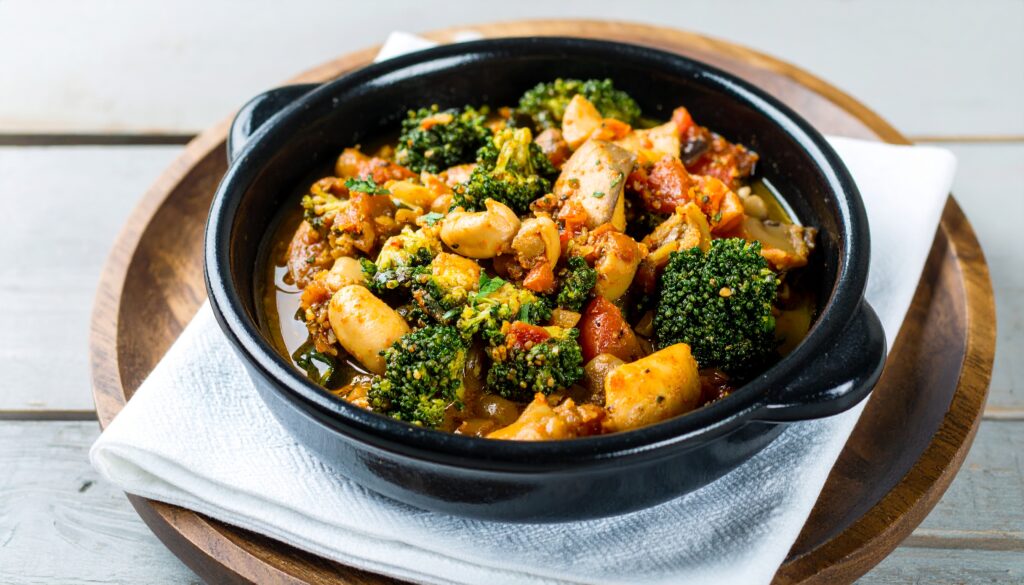
Ajillo is a Spanish dish made by simmering shrimp and vegetables in garlic and olive oil.
In Spanish, it means “small garlic flavor” or “garlic-flavored cooking method,” referring to both the name and the cooking style.
Although ajillo is often thought of as shrimp cooked in olive oil, in Spain it is made with a wide variety of ingredients, such as mushrooms and chicken.
Ajillo is also classified as a Spanish tapas dish.
Tapas dishes are small plates of food in Spanish cuisine.
You can enjoy a variety of dishes, but this one is particularly popular.
TasteTune「ajillo」
Have you had a chance to listen to Tastetune’s song “Ajillo”?
This music is inspired by ajillo, expressing through sound the sizzling of the dish as it cooks and its rich, flavorful taste in a passionate composition. It evokes the intimate, charming atmosphere of sharing tapas in a rustic Spanish taverna. Please give it a listen!
Below, we introduce the thoughts, expressions, and creative approaches embodied in this musical work.
The Crackle and Aroma: Cooking Brought to Life in Music
The piece begins with the sound of olive oil heating in a pan, gently crackling and popping.
That pleasant rhythm vividly reflects the very moment of cooking ajillo.
Bright accents reminiscent of garlic and chili are layered in, creating a sensation as if their “aroma” were rising through the music.
Though heard with the ears, it feels as if the savory air of the kitchen is spreading all around you.
Reflecting Depth and Vibrancy: Layers of Flavor
Throughout the piece flows a warm, enveloping resonance reminiscent of the richness of olive oil.
And the scene of shrimp and mushrooms sizzling is expressed as a rhythmic, joyful motion.
That sound conveys both the savoriness of the ingredients and the joy of cooking, letting you hear the “rich flavors” of ajillo and the “liveliness of people gathered around it.”
Step Into a Spanish Dining Table: The Music’s Atmosphere
What this music depicts is a humble, warm little Spanish eatery.
It brings to mind the sight of friends and family sharing tapas around a table. The mood is both intimate and subtly passionate, so that simply listening makes you feel transported to a Spanish table.
Savoring Ajillo Through Sound
This piece is more than just background music—it is an experience. Through sound, you can savor the “savory aroma” of ajillo, the “liveliness” of its cooking, and the uniquely Spanish “passion” it embodies. Surrender yourself to the music, and you will feel the very essence of the dish with your whole being.
The History of Ajillo
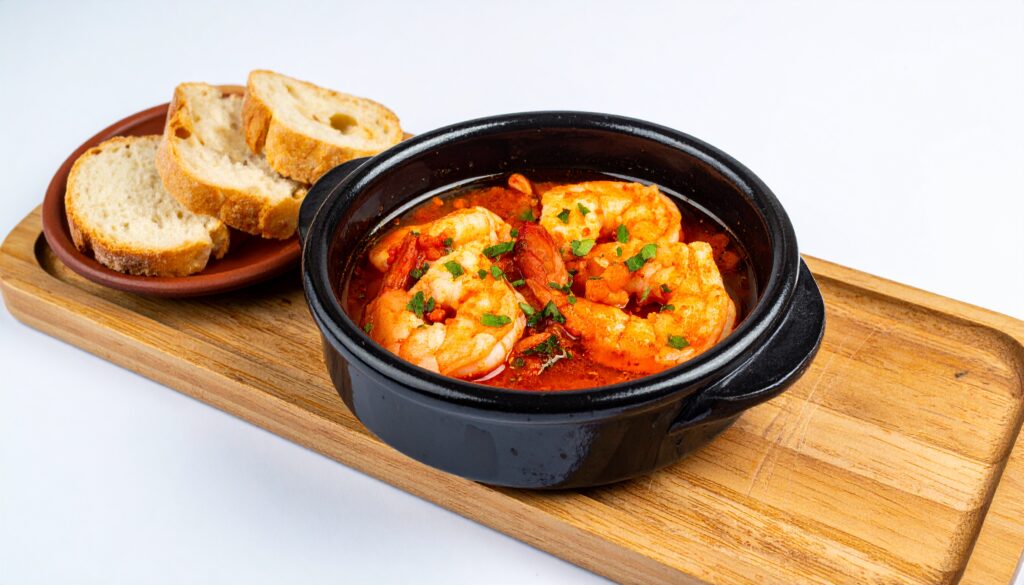
Ajillo is a simple cooking method using olive oil and garlic that became popular in the Andalusia region of southern Spain.
In the early days, it was called “Gambas al Ajillo” and was mainly characterized by seafood such as shrimp simmered in garlic-flavored oil.
Since the ajillo that became popular in Japan was also this gambas al ajillo, many people think that ajillo is a shrimp dish.
It then spread throughout Spain, mainly from Madrid, in the 19th and 20th centuries.
At the same time, the culture of tapas spread throughout Spain.
Tapas cuisine allows you to enjoy a variety of dishes in small portions and is known as a food culture that emphasizes socializing and conversation.
In Japan, it became popular around 2000 with the rise of Spanish bars and the introduction of Ajillo mixes.
Spanish bars are similar to izakaya and light meal bars in Spain, and Ajillo is one of the standard dishes served there.
Trivia about Ajillo
Reasons for serving in earthenware pots (cazuela)
Ajillo is cooked and served in a cazuela.
Cazuela is a small ovenproof earthenware pot, and cooking with it has become a tradition.
In addition, using a casserole dish prevents the oil from cooling down, allowing you to enjoy it piping hot until the very last bite.
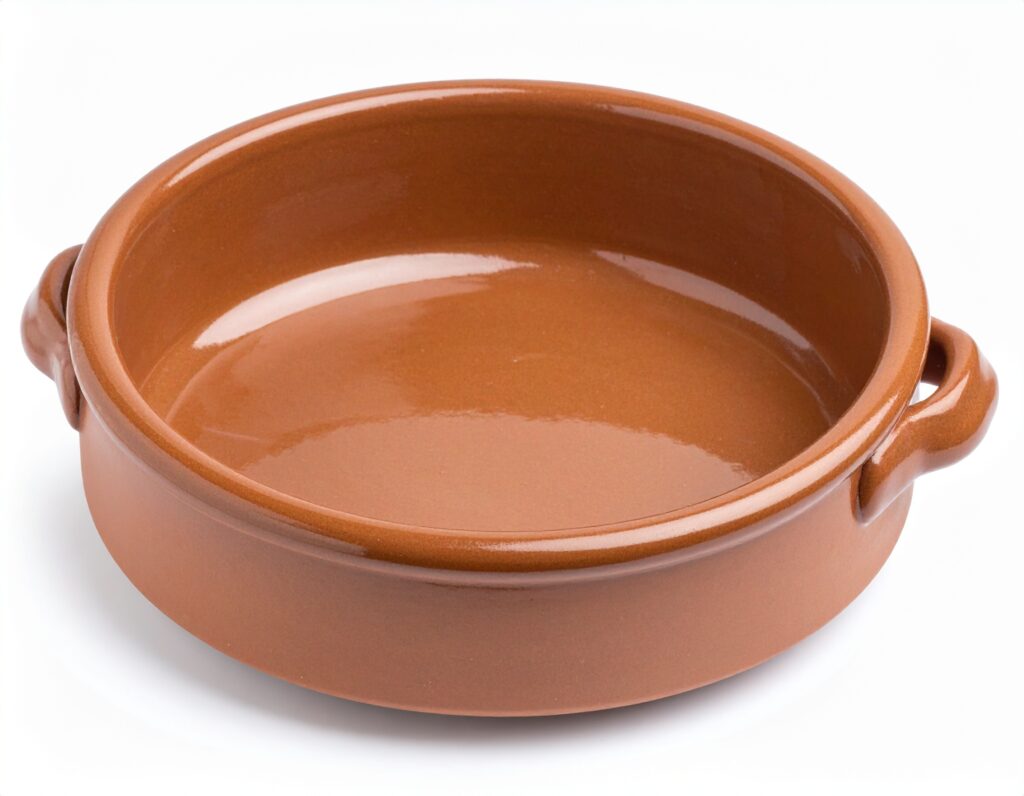
Classic Ajillo
In Ajillo, the “flavor-infused oil” is considered the main ingredient rather than the ingredients themselves.
Therefore, you can enjoy eating bread and other foods by soaking them in oil.
In Spain, it is common to dip bread into the sauce before eating.
Goes well with wine and sherry
Ajillo goes well with alcohol and is often eaten as a snack.
This is because the acidity of the wine neutralizes the richness of the garlic and olive oil.
In Andalusia in particular, it is eaten together with local sherries such as “Fino” and “Manzanilla.”
Ajillo is an appetizer
In Spain, Ajillo is often eaten as an appetizer for lunch or dinner.
I think this is due to the culture of Spain, where tapas dishes are very popular.
It is often eaten as a main dish in Japan, so it may be difficult to imagine.
Creative Ajillo
In Japan, so-called “creative Ajillo” dishes such as “oyster Ajillo” and “broccoli Ajillo” have been created.
These creative Ajillo dishes are sometimes imported back to Japan and served at restaurants overseas.
Health benefits of Ajillo
Olive oil is a central component of the Mediterranean diet and is considered beneficial for cardiovascular health.
For this reason, Ajillo is also popular as a “healthy tapas.”
Variations on Ajillo
As mentioned above, there are various variations of Ajillo, including gambas al Ajillo.
Here are a few examples.
Shrimp Ajillo (Gambas al ajillo)
This is a variation using shrimp, as mentioned earlier.
The rich flavor of shrimp and the aroma of garlic come through strongly, making this a classic tapas dish.
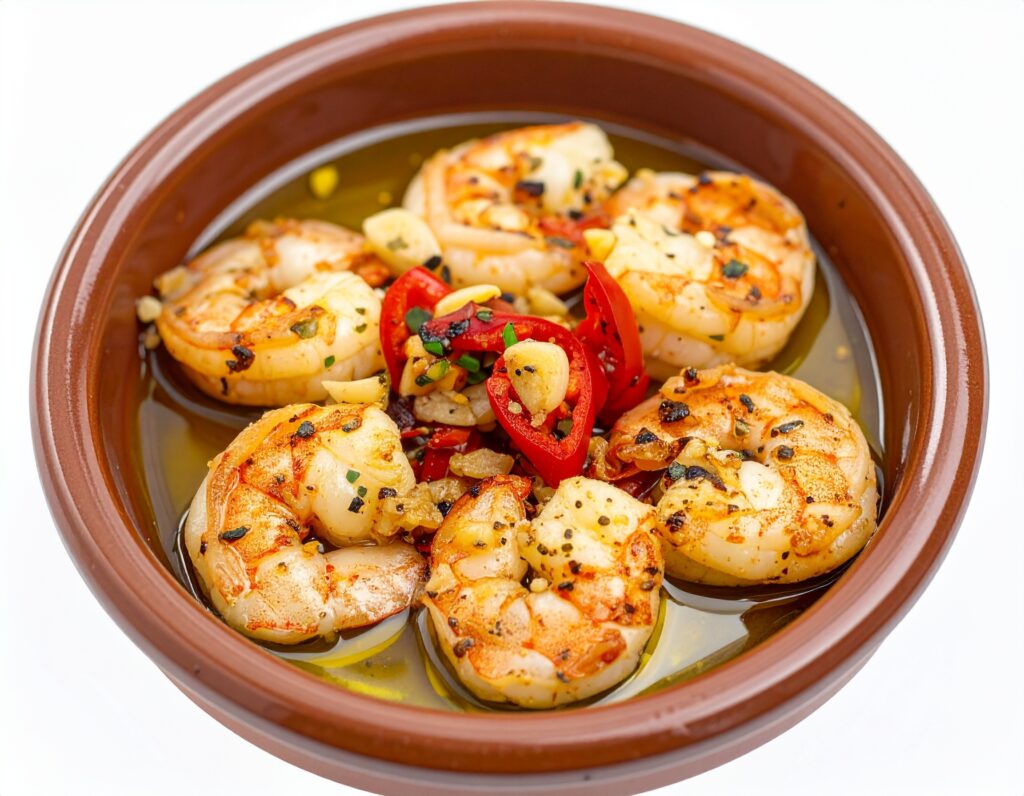
Mushroom Ajillo (Setas al ajillo)
Mushrooms are simmered in garlic oil.
The moisture and umami flavor of the mushrooms are infused into the oil, creating a dish with a thick texture.

Chicken Ajillo (Pollo al ajillo)
This is a variation using chicken with bones or bite-sized pieces.
This dish is juicy, fragrant, and satisfying, and is also popular as a Spanish home-cooked meal.
Additionally, some recipes call for adding white wine, which imparts a richer flavor.

Octopus Ajillo (Pulpo al ajillo)
This is a variation that uses chopped octopus.
After cutting into pieces, parboil them and lightly simmer in garlic oil.
The crisp texture and oil go perfectly together, making it an ideal accompaniment to wine.

Oysters in Ajillo (Ostras al ajillo)
It is popular as a Japanese-style 'creative Ajillo.'
Fresh oysters are simmered in garlic oil and finished with a squeeze of lemon.
The rich and creamy flavor of the oysters melts into the oil, creating a luxurious dish.
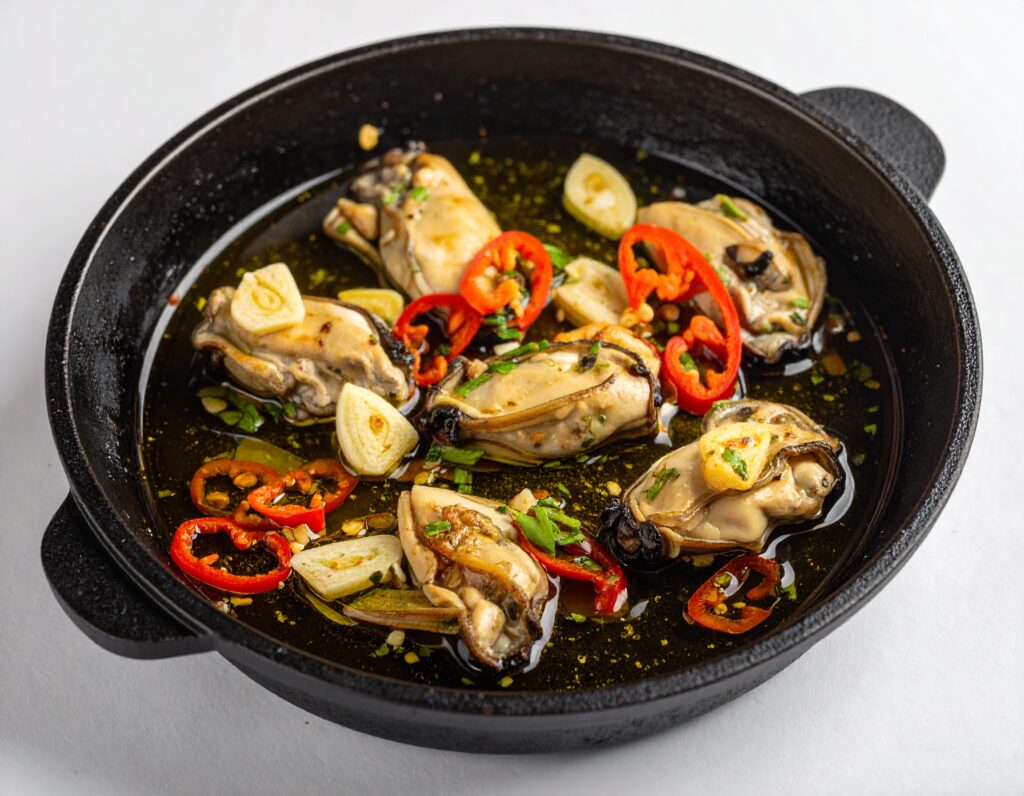
Vegetable Ajillo (Verduras al ajillo)
This variation uses broccoli, paprika, zucchini, and other ingredients.
The sweetness of the vegetables stands out, giving it a light and healthy taste.
Recommended for health-conscious individuals and vegetarians.
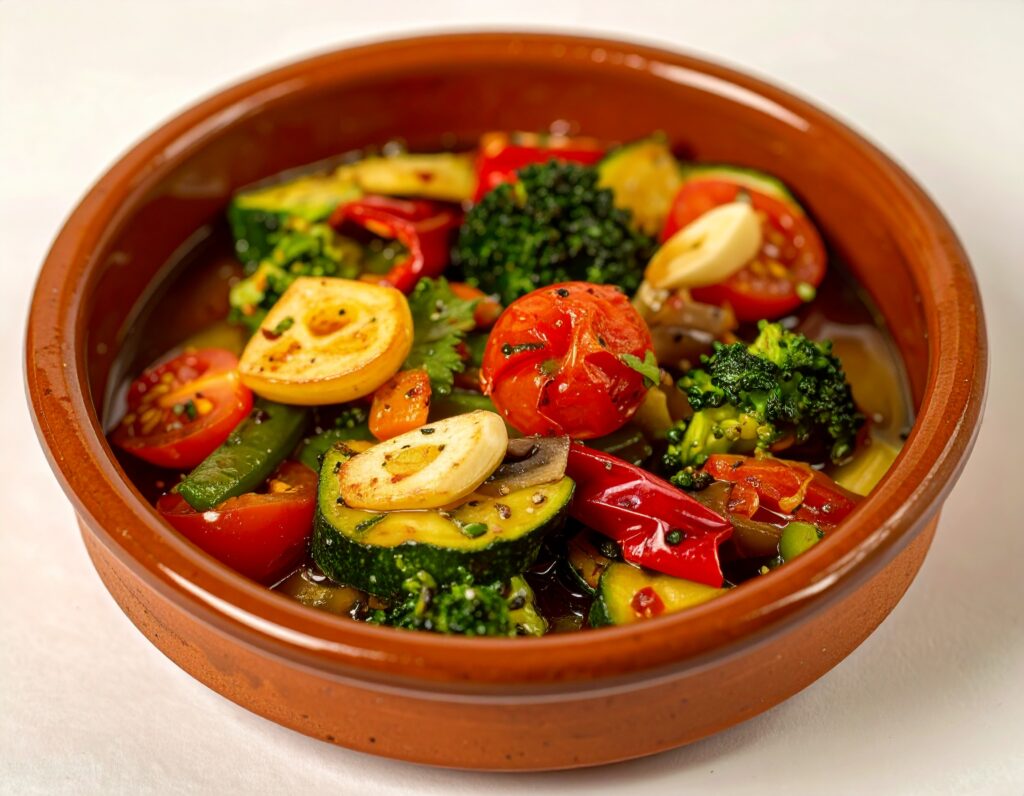
Gizzard Ajillo (Mollejas al ajillo)
This is a variation on cooking pre-processed gizzards by simmering them in oil.
Enjoy the unique crunchy texture and aroma of garlic.
It seems to be popular as a Japanese-style izakaya arrangement.
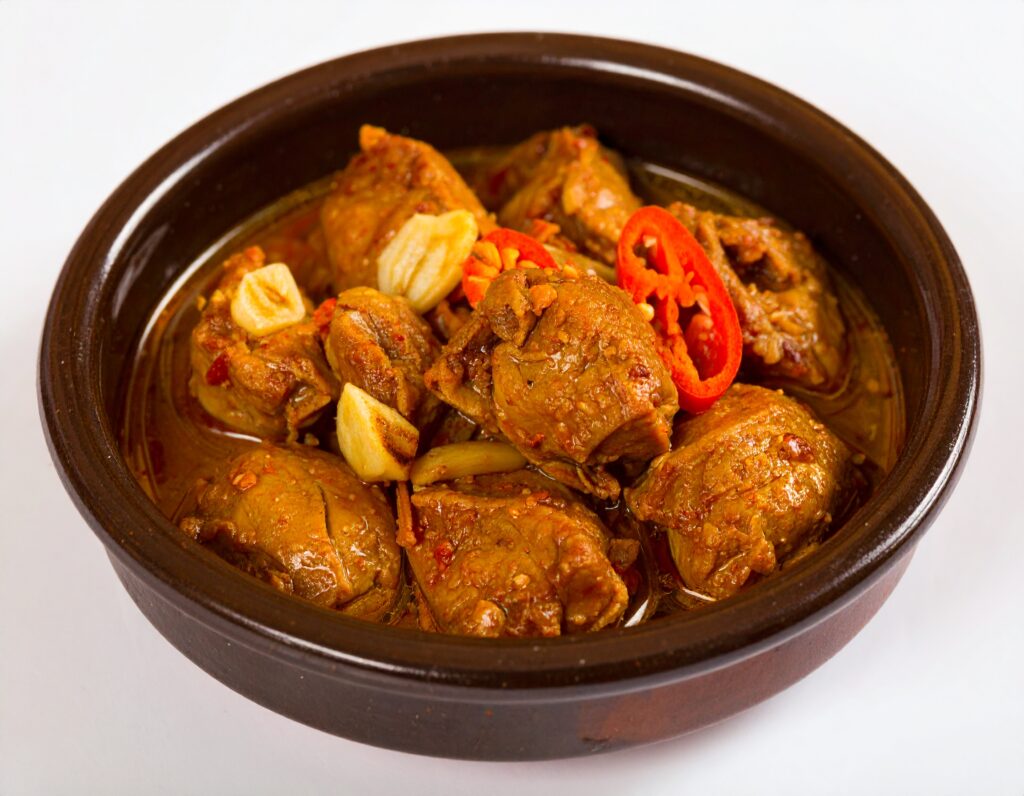
How to make Ajillo
This time, we will explain the detailed recipe using the representative dish “Gambas al Ajillo” as an example.
This is the most popular recipe in bars and homes, and can be adapted to other ingredients, so please give it a try.
Ingredients (serves 4)
- Shrimp (shelled or unshelled) ... 200-250g
- Garlic ... 3-4 cloves (sliced or minced)
- Red chili pepper ... 1 (sliced into rounds)
- Olive oil: approx. 100 ml (enough to cover the ingredients)
- Salt ... a pinch
- Parsley (finely chopped) ... as needed
- Baguette (for serving) ... as needed
Preparation
- Processing shrimp
- If they have shells, remove the shells and remove the back gills.
- Rinse quickly with salt water and wipe off moisture with paper towels.
- Sprinkle lightly with salt to season.
- Garlic and chili peppers
- Garlic burns easily, so it is best to slice it. If you want a stronger aroma, chop it into small pieces.
- Removing the seeds from chili peppers reduces their spiciness.
Cooking Instruction
- Transferring fragrance to oil
- Add olive oil to a small pot or skillet (preferably a clay pot-style casserole dish).
- Place over low heat, add garlic and chili peppers, and slowly warm to infuse the oil with flavor.
- Add shrimp
- When the oil starts to bubble and the aroma rises, add the shrimp.
- Cook over medium-low heat until the shrimp turn red (about 2-3 minutes).
- Finishing
- Season with salt and turn off the heat.
- Finally, sprinkle with parsley to add color.
- Offering
- Serve piping hot at the table.
- The standard way to eat baguettes is to dip them in oil.
Tips for making it delicious
- Keep the heat low.
→ Be careful not to burn the garlic, as it will become bitter. The key is to bring out the aroma slowly. - Don't skimp on the oil.
→ Use enough ingredients to cover them, and you can enjoy the flavorful “oil sauce” on a baguette. - Ingredient Arrangement
→ You can substitute mushrooms, oysters, octopus, vegetables, etc. for shrimp and follow the same procedure.
Arrangement examples
- Add white wine or sherry to finish. → Enhances aroma and richness.
- Squeeze the lemon lightly. → Refreshing flavor.
- Add paprika powder. → The Spanish aroma becomes stronger.
Summary
How was it?
This time, we introduced the Spanish dish Ajillo.
Personally, I love Ajillo, so I am satisfied that I was able to write about the variations I learned this time.
I personally think it's easy to make since it's served as an appetizer.
It seems that the necessary casserole dish can be substituted with a heat-resistant container or pot, so I'm going to try it next time.
I would be delighted if reading this article inspires even a few people to take an interest in Ajillo and want to try it for themselves.

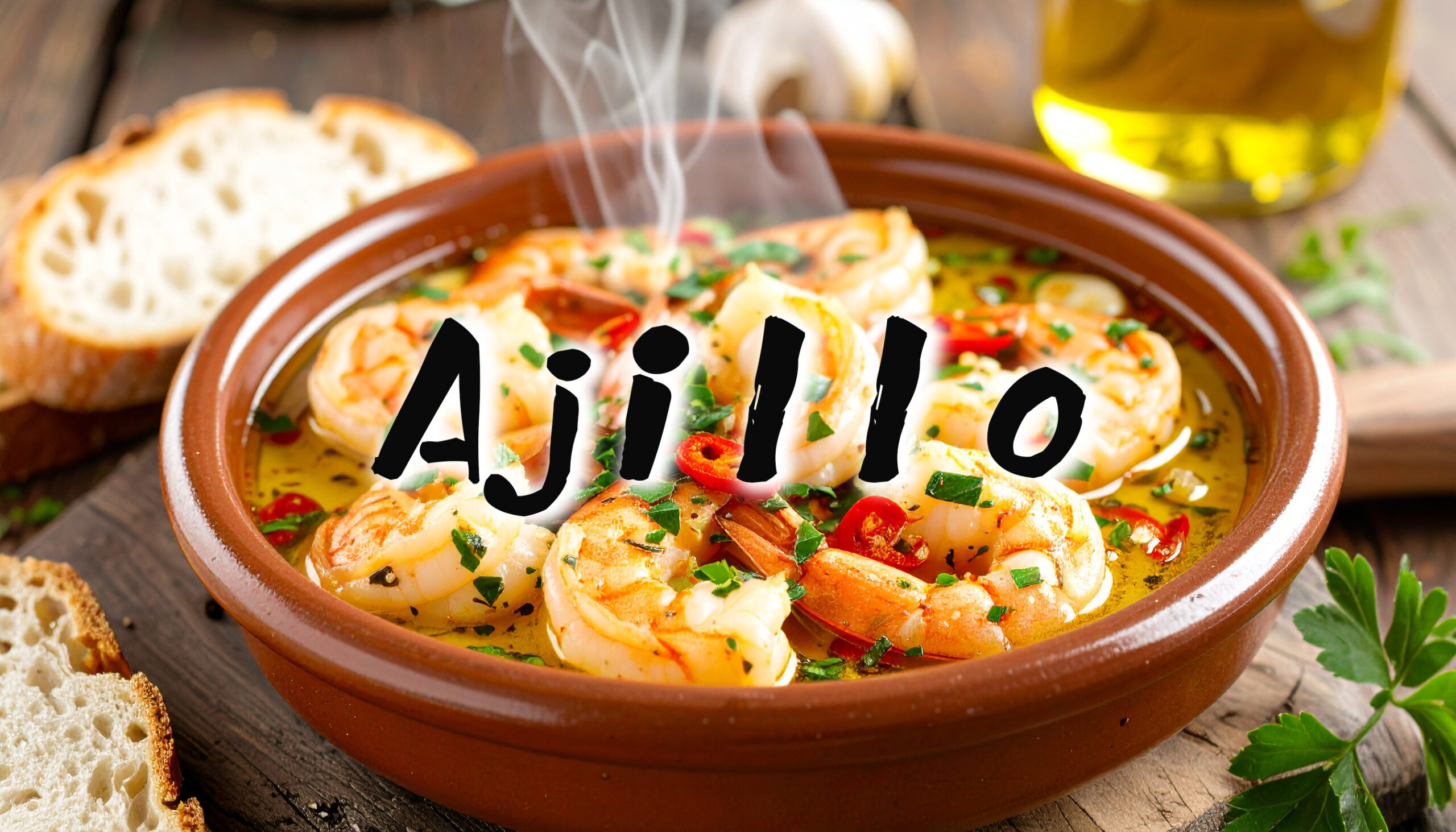


Comment